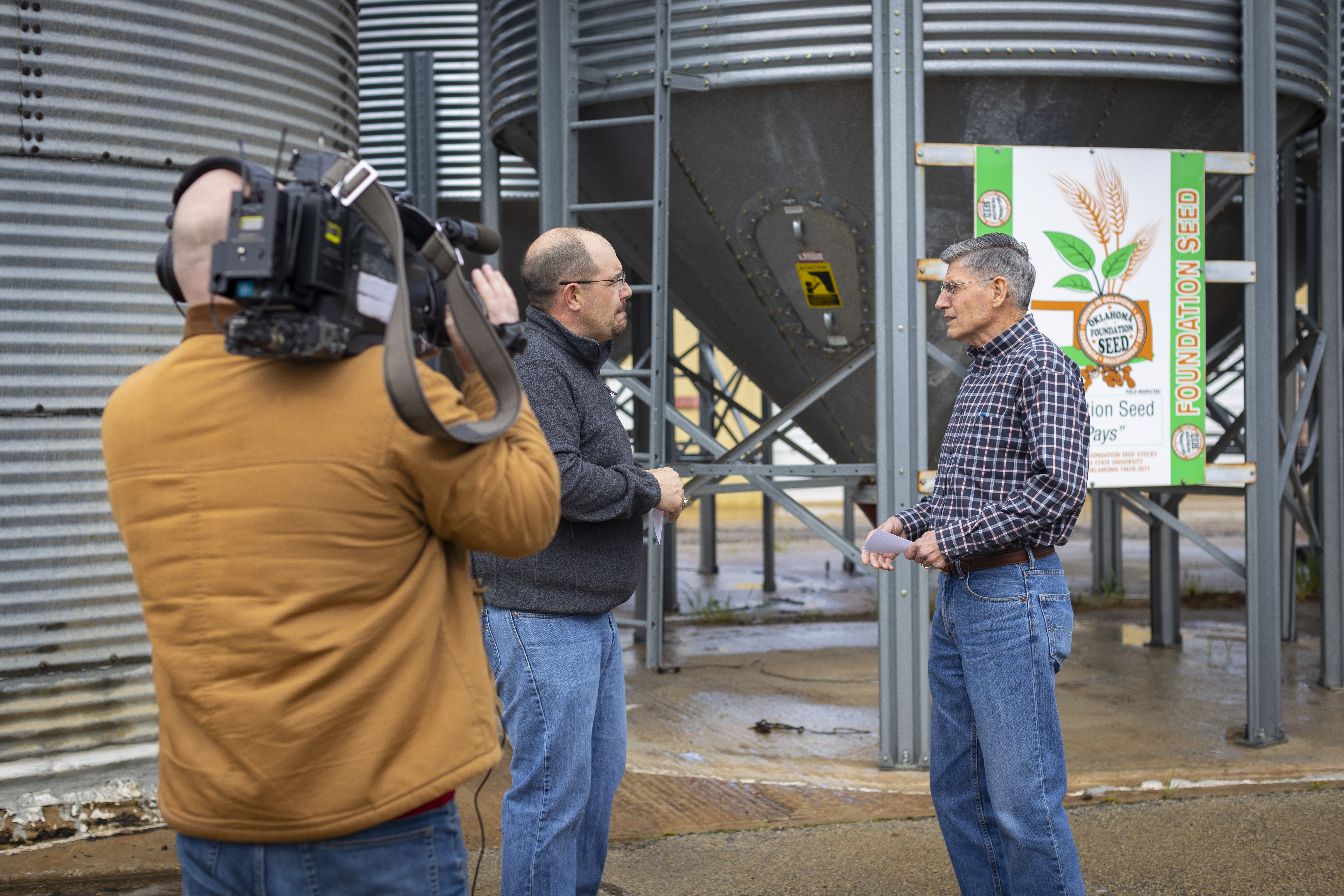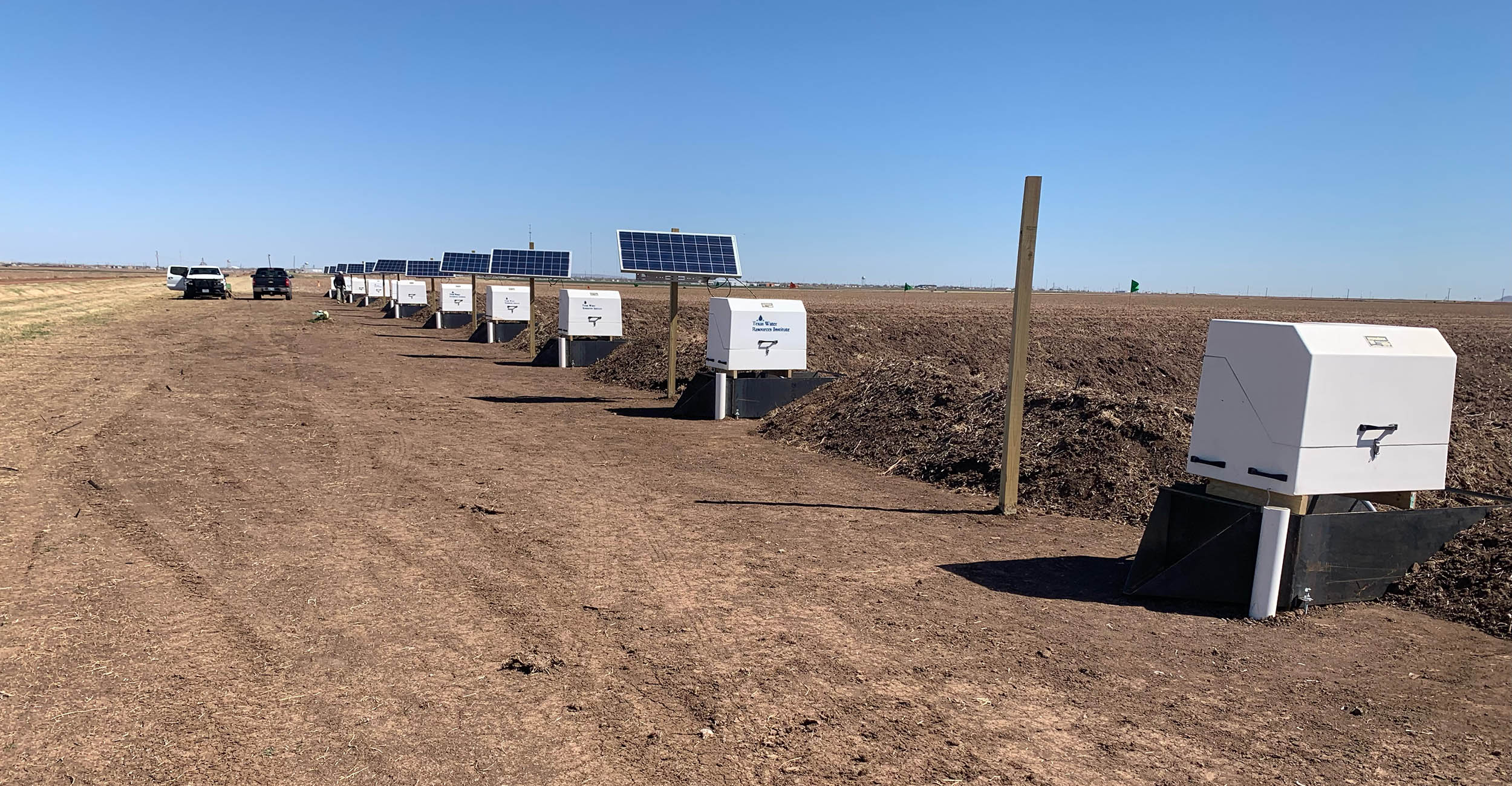
RON’s Dave Lanning has a pre-opening look at today’s agricultural Markets.
Click the audio tab below for today’s report.

Aug 12

RON’s Dave Lanning has a pre-opening look at today’s agricultural Markets.
Click the audio tab below for today’s report.
Aug 12
Woodward Livestock Auction – Woodward, OK
Thu Aug 11, 2022
AUCTION
This Week 2,788
Last Reported 2,058
Last Yea…
Aug 11

This week on SUNUP is Dr. Kim Anderson, Oklahoma State University Extension grain market economist. During this week’s edition, Anderson provides his analysis of the grain markets after recent dramatic shifts and changes in prices.
“Let’s start with what caused the price increase,” Anderson said. “You go back to January of 2020; we had wheat prices down in the $4 range. We came through and here recently we had them up to $13.30.”
The move from around $4 to $8 was because of COVID, Anderson said and was a demand-driven move. Production in 2019 was a record at 28 billion bushels, Anderson said, and wheat used was 27.4 bushels.
“We built stocks that year but when you got to ‘20, you had a 1.3 billion bushel increase in demand and wheat production only increased by 500 million bushels,” Anderson said. “So, you had a shortage and we reduced stocks.”
We have had a slight decline in production this year, Anderson said but we’ve had record use because of hoarding food stocks.
“The last move from $8 to $13 I think was the war,” Anderson said. “Russia and Ukraine shutting the black sea- you took 30 percent of the wheat off the export market and that is going to have an impact. Then, there is inflation. Outside money moves into commodities when there is the fear of inflation and that is what we saw happen on that move up.”
Since mid-May, we have seen a $5 decline in wheat prices. Since that adjustment, Anderson said it is hard to say where prices will go from here.
“You look at northern Oklahoma, we are about $8.25, slightly lower than a dime or two if you are looking at ’23 prices,” Anderson said. “Southern Oklahoma is $7.75.”
When thinking about what prices are going to do, Anderson said to look at Russia.
“We have had Russia’s exports on wheat and other commodities where they were before the war started and Ukraine started shipping commodities a couple of weeks ago,” Anderson said. “I think a good thing to look at is the stocks to use ratio. The five-year average for the world is 39 percent. This year is 34 percent. So, you’ve got tighter stocks.”
We can’t build those stocks up until we get into the 2023 harvest, Anderson said, so he believes these prices will hold for a while and will range from 7 to 10 dollars.
This week on SUNUP:
• Becky Carroll, OSU Extension fruit and nut specialist, has a progress report on this year’s pecan crop.
• Wes Lee, OSU Extension Mesonet agricultural coordinator, predicts a break in this heat wave. Gary McManus updates the drought monitor map.
• Paul Beck, OSU Extension beef cattle specialist, says now is the time to make cattle management plans for the upcoming winter.
• Kim Anderson, OSU Extension grain marketing specialist, explains why the wheat market has been so volatile and where prices may land next.
• Mark Johnson, OSU Extension beef cattle breeding specialist, discusses retained ownership.
• Finally, we take a look at the unique partnership among the USDA, OSU Water Resources Center and Extension to combat the cattle fever tick.
Join us for SUNUP:
Saturday at 7:30 a.m. & Sunday at 6 a.m. on OETA-TV
YouTube.com/SUNUPtv
SUNUP.okstate.edu
Aug 11
The U.S. Department of Agriculture and the Oklahoma Department of Agriculture are now putting the Daily Cash Grain Report into a PDF format – we are saving that PDF and archiving them for today’s specific report. To see today’s update, click on the PDF report link at the bottom of this story.
In addition to the PDF of the daily report, you can also listen to the Cash Grain Report by calling 405-621-5533. Push 2 for the grain report.
Aug 11
Click here to listen to audio
At the 2022 Oklahoma Pork Congress, Senior Farm and Ranch Broadcaster, Ron Hays, had the chance to visit with the Executive Director of the Oklahoma Pork Council, Kylee Deniz. Hays and Deniz talked about t…
Aug 11
The U.S. Grains Council’s (USGC) Southeast Asia and Oceania (SEA&O) office recently led a delegation of U.S. sorghum industry representatives and growers to Vietnam to explore high-value uses of sorghum with regulators and leading buyers and feed mills. The mission produced new opportunities for industry stakeholders in that country to explore the use of sorghum as an alternative feed ingredient for high-value rations, particularly in pet food and aquaculture.
The U.S. sorghum team included growers and representatives from the United Sorghum Checkoff Program (USCP), National Sorghum Producers, Texas Department of Agriculture and the Texas Grain Sorghum Producers Association and Board. The trade mission marked the first official visit by the U.S. sorghum industry to Vietnam since U.S. sorghum gained market access in 2020.
The pathway for U.S. sorghum market access to Vietnam was finalized in May 2020 following the completion of a pest risk assessment and nearly three years of close collaboration between USGC, the U.S. sorghum industry, Vietnam’s Ministry of Agriculture and Rural Development (MARD) and the U.S. Department of Agriculture’s Foreign Agricultural Service (USDA’s FAS) and Animal and Plant Health Inspection Service (APHIS).
“Achieving sorghum market access was a big win for the U.S. sorghum industry”, said Tran Trong Nghia, USGC Vietnam country representative. “The Vietnamese government put in earnest effort to ensure U.S. supply can meet the demand of the Vietnamese people.”
In Hanoi, the sorghum team met with a delegation from MARD, where they discussed methods to mitigate inflationary pressure for feed and food and the benefits of sorghum as an alternative ingredient. The Vietnamese delegation was led by Vice Minister of Agriculture Le Quoc Doanh and included officials from the Plant Protection Department (PPD) and International Cooperation Department (ICD), as well as representatives from two of Vietnam’s largest grain buyers.
The trade team also visited Vietnam’s first industrialized duck raising operation, owned by Mavin, one of Vietnam’s leading agribusinesses that is currently producing 6.5 million ducklings per year. The delegation was briefed on the operating activities of the farm and current dynamics in the Vietnamese duck market and offered information on feed formulations utilizing sorghum.
In southern Vietnam, the mission visited Vin Hoan, the country’s largest producer of pangasius, to discuss the company’s procurement practices and explore potential uses of sorghum in Vietnam’s higher-value aquaculture diets. USGC and USCP have been assessing and promoting the use of sorghum in Vietnamese pangasius diets since 2017, when feeding trials were conducted to test the viability of replacing cassava, a local energy source, with sorghum.
The group also visited Gyuomarch’s Bình D??ng province factory, near Ho Chi Minh City. The sorghum delegation was able to view Gyuomarch’s pet food production process and discuss the potential for sorghum in Vietnamese pet formulations.
“The global pet food market reached $97.47 billion in 2021 and is projected to increase to $136.82 billion by 2028,” said Caleb Wurth, USGC SEA&O regional director. “Vietnam will certainly be part of this growth, and we intend to position our products to participate.”
Vietnam is the largest animal feed market in Southeast Asia, producing over 30.1 million metric tons (MMT) in 2021 and forecasted to surpass 35 MMT of production within the next few years. The country alone produces around 75 percent of the world’s pangasius, a key new-use target for U.S. sorghum and corn co-products.
Learn more about the Council’s work in Vietnam
Aug 11
As lawmakers prepare to write the next farm bill, the American Farm Bureau Federation is sharing stories of its importance to agriculture. Micheal Clements shares more on how the safety net included in the farm bill keeps farmers farming.
…
Aug 11
Oklahoma Farm Bureau, the OKFB Foundation for Agriculture and OKFB Insurance are providing matching funds to county Farm Bureaus that make donations to assist fire departments in their area as Oklahoma battles drought.
All 77 counties i…
Aug 11

The Oklahoma Water Resources Center at Oklahoma State University is teaming up with Texas A&M University for a $1.7 million project to study the benefits of regenerative agriculture in Oklahoma and Texas.
“The water center’s involvement was sparked from discussions on how implementing soil health practices would help achieve Oklahoma’s Water for 2060 goal of consuming no more fresh water in 2060 than was consumed in 2010,” said Kevin Wagner, OWRC director. “There is evidence that practices to improve soil health will also help reach this goal, but there is a need for more research in the Southern Plains.”
Project partners are conducting field research evaluating how the use of cover crops, no till farming and grazing of cover crops effect soil health, soil carbon, nutrient cycling, greenhouse gases emissions, and water quality and quantity. The field research findings will then be used to develop river basin scale models to evaluate the effects of regenerative agricultural practices at a regional scale. Output from these models will be integrated with economic models to show the potential economic impacts on individual producers and surrounding communities.
Although cover crops have been heavily researched in midwestern states, less research has been done in the drier environment of the Southern Plains, according to Wagner, who said part of the project will be studying using wheat as a cover crop for cotton in the Oklahoma panhandle and southwestern regions. Researchers want to understand how cover crops perform in a semi-arid environment with less rainfall and determine the barriers to adoption.
“The focus of this research is cotton as an essential cash crop for southwestern Oklahoma,” Wagner said. “Although cotton provides certain advantages over corn, such as higher tolerance for salinity and lower need for moisture and irrigation, it also has disadvantages, such as leaving very little cover for the soil after harvest.”
The field research kicked off in the spring of 2022 with the installation of 12 water flumes (water collecting devices) at the Southwest Research and Extension Center near Altus. The flumes collect runoff water samples during rain events to study the effects of soil health practices on nutrients, E. coli, and sediment in the runoff water. In preliminary results, researchers found during the first three runoff events that there was three times higher water runoff amounts from the sites without cover crop versus the sites that had an actively growing cover crop in place.
A new Extension Soil Stewardship Program is also being developed to educate producers on soil management and the research findings from the project.
“Producer concerns are always a top priority in our research. It is part of the land-grant mission to extend our research knowledge to the public to help improve the lives of Oklahomans,” Wagner said. “We envision this research being delivered to agricultural producers to provide them with the information they need to assess how integration of regenerative ag practices may benefit their farm and operation.”
OSU Ag Research is Oklahoma’s premier research and technology development agency in agriculture, natural resources and the life sciences.
This work is supported by the Sustainable Agricultural Systems Program?grant no. 2021-68012-35897 from the USDA National Institute of Food and Agriculture. Any opinions, findings, conclusions, or recommendations expressed in this publication are those of the author(s) and do not necessarily reflect the view of the U.S. Department of Agriculture.
Aug 11
Last month (July 2022), the Foreign Agricultural Service of USDA led a trade mission to the Philippines that included representatives from nearly 30 agribusinesses and farm organizations and 10 state departments of agriculture. The primary …